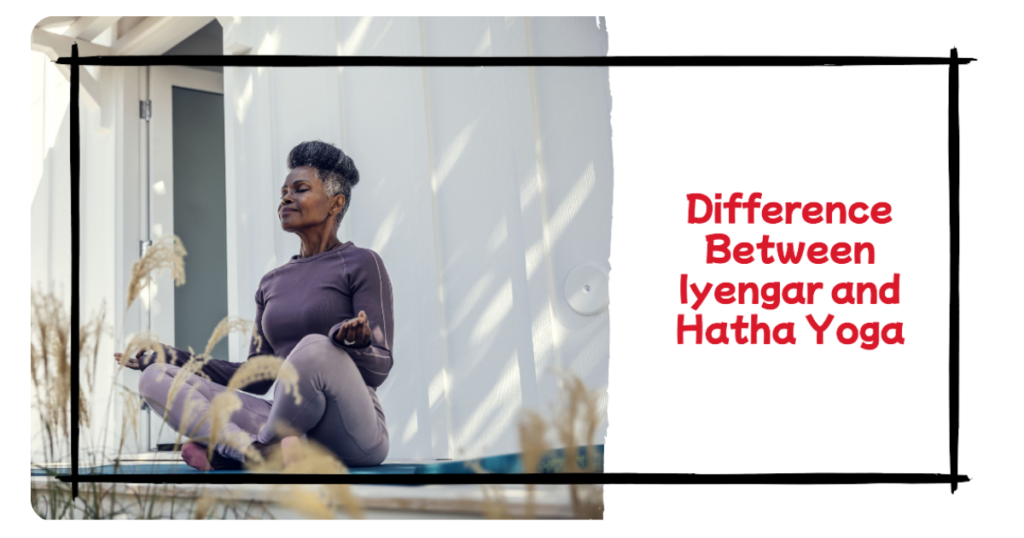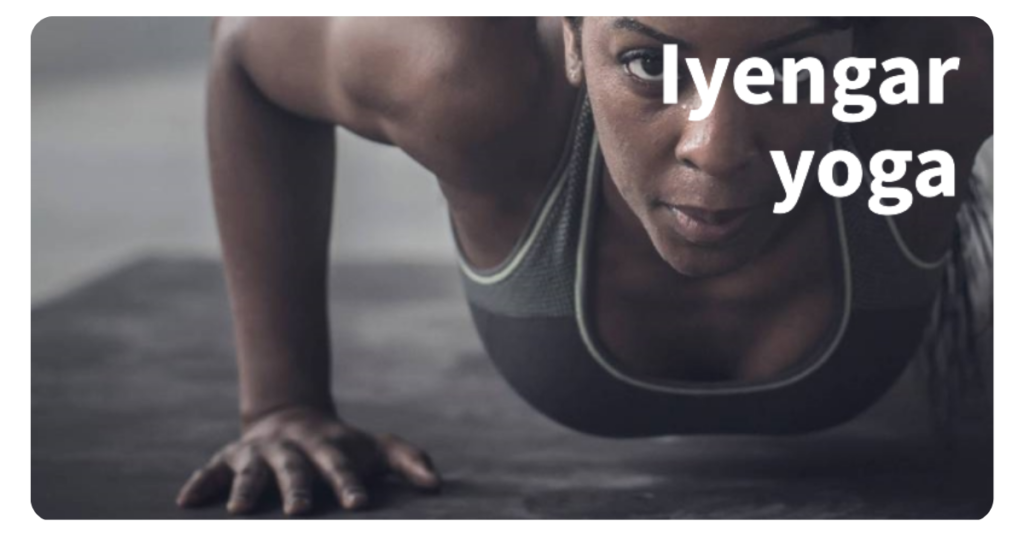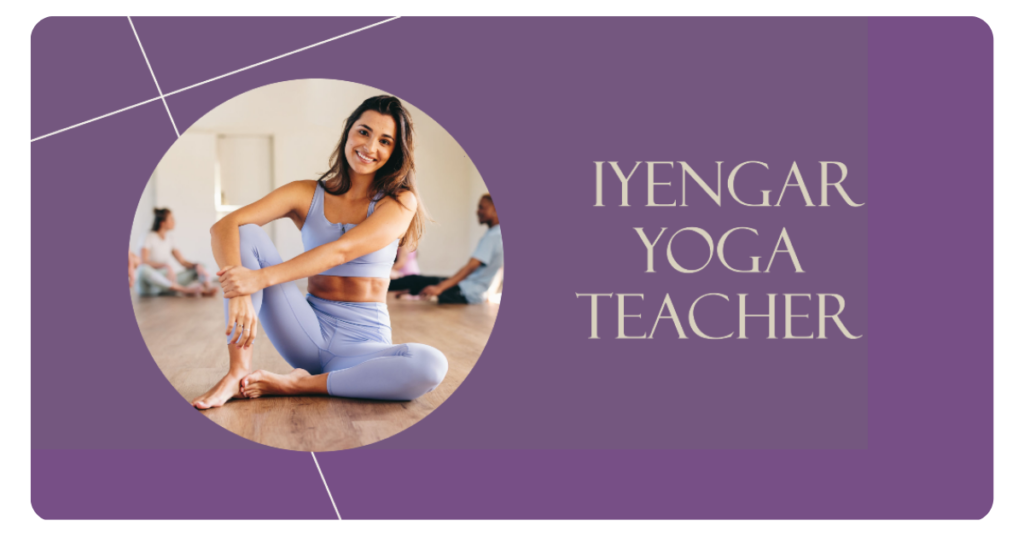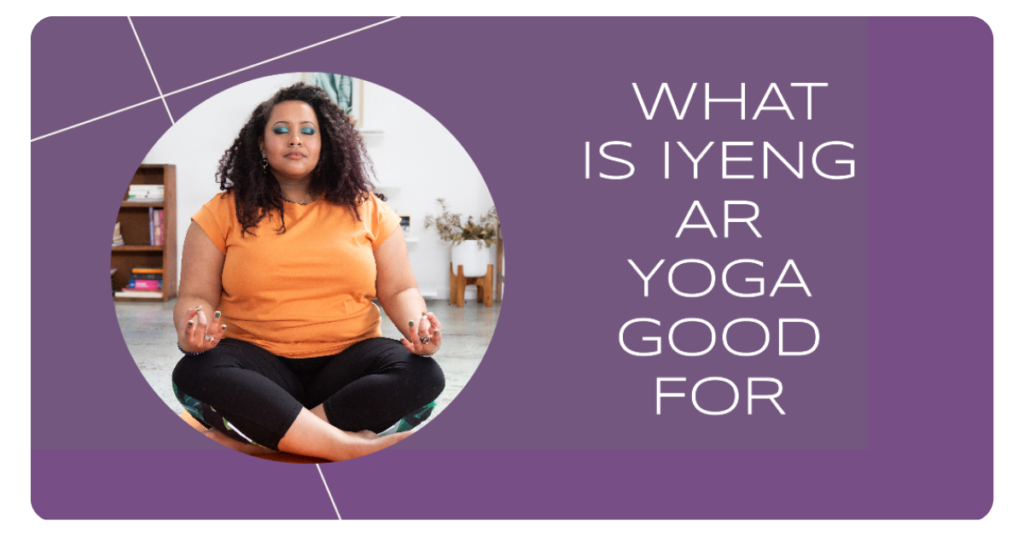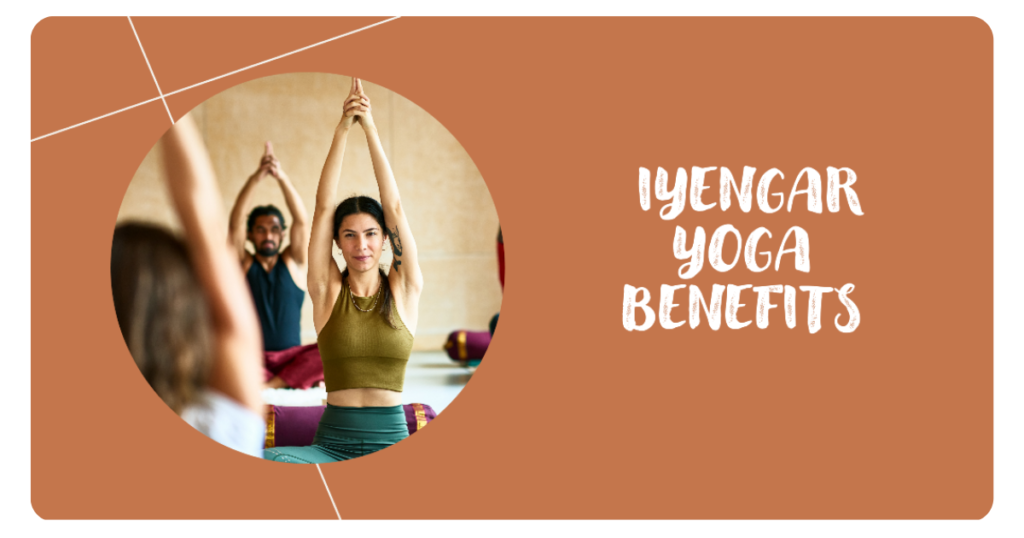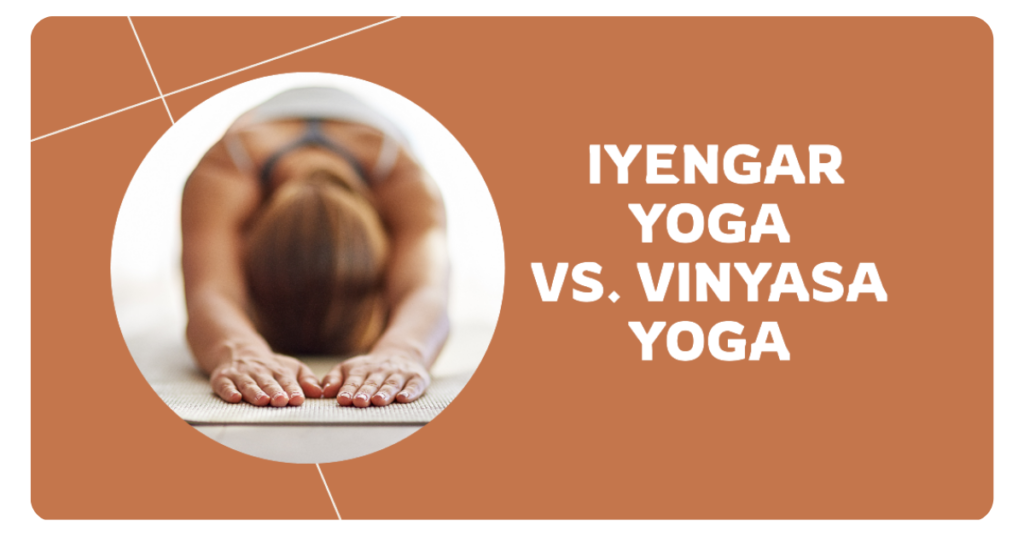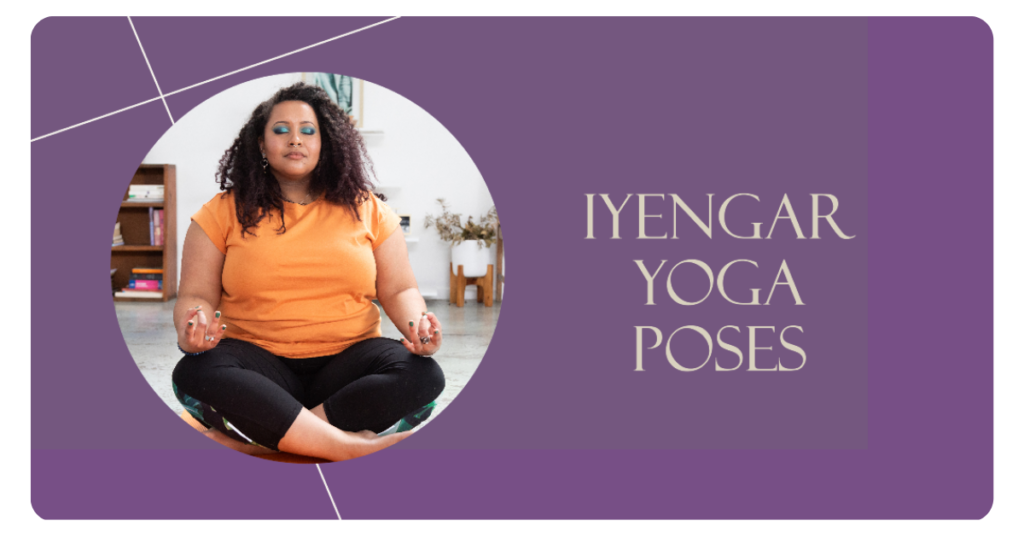
Explore the World of Iyengar Yoga Poses
Iyengar yoga, named after the renowned yoga teacher B.K.S. Iyengar, is a form of Hatha yoga that emphasizes precision, alignment, and the use of props to ensure proper execution of poses. This practice is renowned for its attention to detail and its ability to transform both the physical and mental aspects of one’s being.
At the core of Iyengar yoga lies the belief that every individual is unique, and therefore, the poses should be tailored to suit each person’s specific needs and abilities. This is where the use of props, such as blocks, straps, blankets, and chairs, comes into play. These tools aid in achieving the correct alignment and posture, allowing practitioners to experience the full benefits of each asana (pose) while minimizing the risk of injury.
One of the primary advantages of practicing Iyengar yoga poses is the development of flexibility, strength, and body awareness. By focusing on proper form and alignment, practitioners can target specific muscle groups and improve their overall physical well-being. Furthermore, the emphasis on conscious breathing and meditation cultivates a sense of mindfulness, which can positively impact one’s mental health and overall quality of life.
Here are some key principles that define the practice of Iyengar yoga poses:
- Alignment: Proper body alignment is crucial in Iyengar yoga to ensure the safe and effective execution of poses, as well as to prevent injuries.
- Precision: Each pose is meticulously taught, with attention to detail, to ensure that practitioners understand the nuances of the asana and can perform it with precision.
- Use of Props: Props, such as blocks, straps, blankets, and chairs, are extensively used to help practitioners achieve the correct alignment and to make poses more accessible.
- Sequencing: Poses are sequenced in a specific order to warm up the body and prepare it for more advanced postures.
- Mindfulness: Iyengar yoga emphasizes conscious breathing, focus, and meditation, promoting a heightened sense of awareness and mindfulness.
As you delve into the world of Iyengar yoga poses, it’s essential to approach your practice with patience, dedication, and an open mind. Remember, the journey towards mastering these poses is a lifelong process, and the rewards extend far beyond the physical realm, encompassing mental and spiritual growth as well. BKS Iyengar Biography
The Pioneering Influence of B.K.S. Iyengar
B.K.S. Iyengar (1918-2014) was a pivotal figure in the popularization of yoga in the modern world. Born in a small village in India, he overcame numerous health challenges in his youth and dedicated his life to the study and teaching of yoga. Iyengar’s innovative approach to yoga, which emphasized precise alignment, the use of props, and therapeutic applications, transformed the practice into a scientifically grounded discipline accessible to people of all ages and abilities.
Throughout his lifetime, Iyengar authored numerous books, including the seminal work “Light on Yoga,” which has been translated into multiple languages and remains a fundamental text for yoga practitioners and teachers worldwide. His teachings have been instrumental in establishing yoga as a respected form of physical and mental exercise, recognized for its numerous health benefits.
The Importance of Proper Alignment
Alignment is a cornerstone of Iyengar yoga, as it ensures the safe and effective execution of poses while maximizing their benefits. Proper alignment involves positioning the body in a way that maintains the natural curves of the spine, distributes weight evenly, and engages the appropriate muscle groups.
By emphasizing alignment, Iyengar yoga not only reduces the risk of injury but also enhances the practitioner’s awareness of their body, promoting a deeper understanding of their physical limitations and strengths. This heightened body awareness can translate into improved posture, balance, and coordination in daily life.
Here’s an example of how proper alignment is emphasized in a fundamental pose like Tadasana (Mountain Pose):
- Feet: Place your feet hip-width apart, with the weight evenly distributed between the balls and heels of the feet.
- Legs: Engage the quadriceps (front thigh muscles) and draw the kneecaps upward, creating a gentle inward rotation of the thighs.
- Pelvis: Tuck in the tailbone slightly, bringing the pelvis into a neutral position.
- Spine: Lengthen the spine by lifting the sternum (chest bone) and gently drawing the shoulders back and down.
- Head: Align the head in a neutral position, with the chin slightly tucked in and the gaze forward.
By maintaining this precise alignment, practitioners can cultivate a strong foundation for more advanced poses while developing greater body awareness and control.
The Role of Props in Iyengar Yoga
Props are an integral part of Iyengar yoga practice, serving as tools to help practitioners achieve proper alignment, deepen their understanding of poses, and make various asanas more accessible. The most commonly used props in Iyengar yoga include:
- Blocks: Rectangular foam or wood blocks of varying heights provide support for the hands, feet, or other body parts, helping practitioners maintain proper alignment and reducing strain.
- Straps: Long, sturdy straps are used to extend the reach of the arms or legs, allowing for a greater range of motion and deeper stretches.
- Blankets: Folded blankets can be used to elevate or support various body parts, such as the hips or shoulders, in seated or supine poses.
- Chairs: Chairs offer support and stability for those with limited mobility or balance, making standing poses more accessible.
- Walls: The wall can be used as a prop for support, alignment, and feedback in various poses, such as standing forward bends or inversions.
By incorporating props into their practice, practitioners can gradually work towards mastering more challenging poses while minimizing the risk of injury and honoring their current level of flexibility and strength. Iyengar Yoga Props Guide
Iyengar Yoga for Beginners: Tips and Considerations
For those new to Iyengar yoga, it’s essential to approach the practice with patience and an open mind. Here are some tips to help beginners get started on the right foot:
- Find a Qualified Teacher: Seek guidance from a certified Iyengar yoga instructor who can provide personalized instruction and ensure proper alignment and technique. “How to Become an Iyengar Yoga Teacher: A Step-by-Step Guide”
- Start Slowly: Begin with foundational poses and gradually progress to more advanced asanas as your strength, flexibility, and understanding of the practice deepen.
- Embrace the Use of Props: Don’t be hesitant to use props – they are essential tools in Iyengar yoga for achieving correct alignment and preventing injury.
- Listen to Your Body: Respect your body’s limitations and avoid pushing beyond your current abilities. Iyengar yoga is a journey, and progress takes time and dedication.
- Focus on Breath and Mindfulness: Incorporate conscious breathing and mindfulness techniques into your practice, as they are integral components of Iyengar yoga.
- Be Consistent: Consistent practice is key to seeing progress and reaping the full benefits of Iyengar yoga. Aim for at least two to three sessions per week.
Remember, as a beginner, it’s perfectly normal to feel challenged or even frustrated at times. Embrace the process, stay patient, and celebrate each small achievement along the way. Tips for Beginning Iyengar Yoga
Standing Iyengar Yoga Poses
Standing poses, or sthiti asanas, are foundational in Iyengar yoga practice. These poses help to build strength, stability, and body awareness while also improving balance and posture. Here are some of the most commonly practiced standing Iyengar yoga poses:
Tadasana (Mountain Pose)
Tadasana is often referred to as the “mother of all poses” as it serves as the foundation for many other standing asanas. This deceptively simple pose teaches proper alignment and grounding.
Instructions:
- Stand with your feet hip-width apart, weight evenly distributed on the balls and heels of the feet.
- Engage your quadriceps (front thigh muscles) and draw the kneecaps upward.
- Tuck in your tailbone slightly, bringing your pelvis into a neutral position.
- Lengthen your spine by lifting your sternum (chest bone) and drawing your shoulders back and down.
- Align your head in a neutral position, with your chin slightly tucked in and your gaze forward.
- Breathe deeply and feel your body rooting down into the earth.
Benefits:
- Improves posture and body alignment
- Strengthens leg muscles, ankles, and arches
- Promotes calmness and grounding
- Enhances body awareness
Modifications and Props:
- Use a wall for support and feedback on alignment
- Place a block or folded blanket under the heels for those with tight calf muscles
Trikonasana (Triangle Pose)
Trikonasana is a standing lateral stretch that opens the chest, shoulders, and hips while also improving balance and stability.
Instructions:
- Start in Tadasana (Mountain Pose).
- Step your feet apart, approximately 3-4 feet, turning your right foot out 90 degrees and your left foot in slightly.
- Extend your arms out to the sides, parallel to the floor, with your palms facing down.
- Exhale and bend your torso to the right, reaching your right hand towards your right ankle or shin.
- Extend your left arm towards the ceiling, keeping both sides of your torso long.
- Turn your head to gaze up at your left hand.
- Hold the pose for several breaths, then repeat on the opposite side.
Benefits:
- Improves balance and stability
- Stretches the inner thighs, hamstrings, and calves
- Opens the chest and shoulders
- Strengthens the legs and core
Modifications and Props:
- Use a block or chair for support under the hand that reaches towards the floor
- Keep the front heel slightly raised for those with tight hamstrings
Virabhadrasana I & II (Warrior Poses)
The Warrior poses, Virabhadrasana I and II, are powerful standing poses that build strength, stamina, and focus.
Virabhadrasana I (Warrior I) Instructions:
- Start in Tadasana (Mountain Pose).
- Step your feet apart, approximately 3-4 feet, turning your right foot out 90 degrees and your left foot in slightly.
- Bend your right knee over your right ankle, keeping your knee aligned with your ankle.
- Extend your arms overhead, palms facing inward.
- Gaze up towards your hands.
- Hold the pose for several breaths, then repeat on the opposite side.
Virabhadrasana II (Warrior II) Instructions:
- Start in Virabhadrasana I.
- Extend your arms out to the sides, parallel to the floor, with your palms facing down.
- Turn your head to gaze over your front hand.
- Hold the pose for several breaths, then repeat on the opposite side.
Benefits:
- Builds strength in the legs, core, and upper body
- Improves balance, stability, and focus
- Stretches the hips, groin, and shoulders
- Promotes a sense of empowerment and courage
Modifications and Props:
- Use a chair or wall for support in Warrior I
- Place a block or blanket under the back heel for those with tight hamstrings
These standing poses lay a strong foundation for the Iyengar yoga practice, developing essential skills such as alignment, balance, and strength. By breaking down the instructions and offering modifications and props, practitioners of all levels can safely explore and reap the benefits of these asanas.
Seated Iyengar Yoga Poses
Seated poses, or baddha asanas, are an integral part of Iyengar yoga practice. These grounding postures help to improve flexibility, strengthen the core, and cultivate a sense of stability and stillness. Here are some common seated Iyengar yoga poses:
Dandasana (Staff Pose)
Dandasana is a foundational seated pose that promotes spinal extension and body awareness.
Instructions:
- Sit on the floor with your legs extended in front of you, feet together, and spine tall.
- Engage your quadriceps (front thigh muscles) by pressing the back of your knees into the floor.
- Lengthen your spine by lifting your sternum (chest bone) and drawing your shoulders back and down.
- Extend your arms alongside your body, with your palms facing down.
- Breathe deeply and maintain an upright, elongated posture.
Benefits:
- Strengthens the back muscles and improves posture
- Stretches the hamstrings and calf muscles
- Promotes spinal extension and body awareness
- Cultivates focus and concentration
Modifications and Props:
- Use a folded blanket or block under your sitting bones for support
- Bend your knees slightly if you experience discomfort in your lower back or hamstrings
Baddha Konasana (Bound Angle Pose)
Baddha Konasana is a seated hip opener that also stretches the inner thighs and groin area.
Instructions:
- Sit on the floor with your legs extended in front of you.
- Bend your knees and bring the soles of your feet together, allowing your knees to drop towards the floor.
- Holding onto your feet or ankles, gently pull your heels towards your pelvis.
- Lengthen your spine and engage your core muscles.
- breathe deeply into the hip and inner thigh stretch.
Benefits:
- Opens the hips, inner thighs, and groin
- Improves flexibility and range of motion in the hip joints
- Stretches the knees, ankles, and spine
- Promotes relaxation and introspection
Modifications and Props:
- Use blocks, blankets, or a wall to support your knees or back if the stretch is too intense
- Sit on a folded blanket or block to elevate your sitting bones
Upavista Konasana (Wide Angle Seated Forward Bend)
Upavista Konasana is a deep forward bend that stretches the hamstrings, calves, and lower back.
Instructions:
- Sit on the floor with your legs extended in front of you, as wide as comfortable.
- Flex your feet and engage your quadriceps (front thigh muscles).
- Inhale and lengthen your spine, reaching your arms overhead.
- Exhale and fold forward from your hips, reaching your hands towards your feet or shins.
- Hold the pose for several breaths, focusing on lengthening your spine with each inhalation.
Benefits:
- Stretches the hamstrings, calves, and lower back
- Improves flexibility in the hips and spine
- Calms the mind and promotes relaxation
- Relieves stress and fatigue
Modifications and Props:
- Use a strap or towel looped around your feet to assist with the forward fold
- Place blocks or folded blankets under your knees or sit against a wall for support
Janu Sirsasana (Head-to-Knee Forward Bend)
Janu Sirsasana is an asymmetrical forward bend that targets the hamstrings and lower back while also promoting spinal mobility.
Instructions:
- Sit on the floor with your legs extended in front of you.
- Bend your right knee and draw your right heel toward your groin.
- Inhale and lengthen your spine, reaching your arms overhead.
- Exhale and fold forward from your hips, reaching your hands towards your left foot or shin.
- Hold the pose for several breaths, then repeat on the opposite side.
Benefits:
- Stretches the hamstrings, calves, and lower back
- Improves spinal mobility and flexibility
- Relieves tension in the back and shoulders
- Promotes calmness and introspection
Modifications and Props:
- Use a strap or towel looped around your foot to assist with the forward fold
- Place a block or folded blanket under your bent knee for support
These seated Iyengar yoga poses offer a variety of benefits, from improving flexibility and range of motion to promoting relaxation and introspection. By incorporating props and modifications as needed, practitioners of all levels can safely explore and reap the rewards of these grounding asanas.
Supine Iyengar Yoga Poses
Supine poses, or sava asanas, are practiced while lying on the back. These poses offer a chance to release tension, stretch the body, and cultivate a sense of relaxation and restoration. Here are some key supine Iyengar yoga poses:
Supta Padangusthasana (Reclining Hand-to-Big-Toe Pose)
Supta Padangusthasana is a supine hamstring stretch that also targets the calves, hips, and lower back.
Instructions:
- Lie on your back with your legs extended and arms at your sides, palms facing down.
- Bend your right knee and loop a strap around the ball of your right foot.
- Straighten your right leg towards the ceiling, using the strap to support your leg.
- Keep your left leg firmly planted on the floor, engaging your quadriceps (front thigh muscles).
- Hold the pose for several breaths, then repeat on the opposite side.
Benefits:
- Stretches the hamstrings, calves, and hips
- Improves flexibility in the lower body
- Releases tension in the lower back
- Promotes relaxation and stress relief
Modifications and Props:
- Use a strap or towel to assist with the leg extension
- Place a folded blanket or block under your shoulders for support
Setu Bandha Sarvangasana (Bridge Pose)
Setu Bandha Sarvangasana is a gentle backbend that stretches the chest, shoulders, and spine while strengthening the legs and core.
Instructions:
- Lie on your back with your knees bent and feet flat on the floor, hip-width apart.
- Engage your core muscles and press your feet and arms into the floor.
- Inhale and lift your hips towards the ceiling, creating a smooth, elongated spine.
- Interlace your fingers beneath your lower back for support.
- Hold the pose for several breaths, focusing on your breath and alignment.
Benefits:
- Stretches the chest, shoulders, and spine
- Strengthens the legs, core, and back muscles
- Improves posture and body awareness
- Relieves stress and fatigue
Modifications and Props:
- Place a block or folded blanket under your shoulders for support
- Use a strap or towel around your thighs to assist with the backbend
Supta Virasana (Reclining Hero Pose)
Supta Virasana is a restorative pose that stretches the quadriceps and ankles while promoting relaxation and release.
Instructions:
- Kneel on the floor with your knees together and feet separated.
- Lower your torso towards the floor, resting your head and shoulders on a folded blanket or block.
- Extend your arms to the sides, palms facing up.
- Breathe deeply and allow your body to release tension and relax.
- Hold the pose for several minutes, focusing on your breath.
Benefits:
- Stretches the quadriceps and ankles
- Relieves tension in the lower back and hips
- Promotes relaxation and stress relief
- Calms the mind and improves focus
Modifications and Props:
- Use a folded blanket or block under your head and shoulders for support
- Place a rolled-up blanket or bolster under your knees for added comfort
Savasana (Corpse Pose)
Savasana is the final resting pose in an Iyengar yoga practice, promoting complete relaxation and integration of the session’s benefits.
Instructions:
- Lie on your back with your legs extended and arms at your sides, palms facing up.
- Allow your feet to fall open and your body to sink into the floor.
- Relax your facial muscles and release any tension in your body.
- Breathe naturally, focusing on the rise and fall of your abdomen.
- Remain in this pose for several minutes, allowing your mind and body to fully rest and integrate.
Benefits:
- Promotes deep relaxation and stress relief
- Calms the mind and improves focus
- Aids in the integration of the practice’s benefits
- Restores energy and rejuvenates the body
Modifications and Props:
- Use a folded blanket or bolster under your knees for added comfort
- Cover yourself with a blanket to maintain warmth and promote relaxation
These supine Iyengar yoga poses offer a chance to release tension, stretch the body, and restore energy. By incorporating props and modifications as needed, practitioners can experience the profound relaxation and restorative benefits of these asanas, essential components of a well-rounded Iyengar yoga practice.
Prone Iyengar Yoga Poses
Prone poses, or adhomukha asanas, are practiced while lying on the stomach. These poses help to strengthen the back muscles, improve spinal mobility, and cultivate a sense of grounding and stability. Here are some key prone Iyengar yoga poses:
Bhujangasana (Cobra Pose)
Bhujangasana is a gentle backbend that stretches the chest, shoulders, and abdomen while strengthening the back muscles.
Instructions:
- Lie on your stomach with your legs extended and feet hip-width apart.
- Place your hands under your shoulders, fingers pointing forward.
- Inhale and press into your hands, lifting your chest off the floor while keeping your pelvis and legs grounded.
- Gaze forward or slightly upward, taking care not to strain your neck.
- Hold the pose for several breaths, maintaining a smooth, elongated spine.
Benefits:
- Stretches the chest, shoulders, and abdomen
- Strengthens the back muscles and improves posture
- Improves spinal mobility and flexibility
- Relieves stress and fatigue
Modifications and Props:
- Place a folded blanket or block under your pelvis for added support
- Use a strap or towel around your upper arms to assist with the backbend
Salabhasana (Locust Pose)
Salabhasana is a strengthening pose that targets the back muscles, glutes, and hamstrings while improving spinal mobility.
Instructions:
- Lie on your stomach with your arms extended in front of you, palms facing down.
- Engage your core muscles and inhale, lifting your chest, arms, and legs off the floor simultaneously.
- Keep your legs together and extended, with your toes pointing back.
- Gaze forward or slightly down, taking care not to strain your neck.
- Hold the pose for several breaths, maintaining a strong, stable position.
Benefits:
- Strengthens the back muscles, glutes, and hamstrings
- Improves spinal mobility and flexibility
- Promotes a sense of stability and grounding
- Cultivates focus and concentration
Modifications and Props:
- Keep your arms at your sides or bend your elbows for added support
- Place a folded blanket under your pelvis for added comfort
Dhanurasana (Bow Pose)
Dhanurasana is a deep backbend that stretches the entire front body while strengthening the back muscles and promoting a sense of openness and expansiveness.
Instructions:
- Lie on your stomach with your feet hip-width apart and your arms at your sides.
- Bend your knees and reach back to grasp your ankles with your hands.
- Inhale and lift your chest and thighs off the floor, creating a smooth backbend.
- Gaze forward or slightly upward, taking care not to strain your neck.
- Hold the pose for several breaths, engaging your core and back muscles.
Benefits:
- Stretches the chest, shoulders, and abdomen
- Strengthens the back muscles and improves posture
- Promotes a sense of openness and expansiveness
- Cultivates focus and determination
Modifications and Props:
- Use a strap or towel around your ankles to assist with the backbend
- Place a folded blanket or block under your pelvis for added support
Shalabhasana (Locust Pose)
Shalabhasana is a variation of the Locust Pose that targets the back muscles, glutes, and hamstrings while promoting spinal mobility and stability.
Instructions:
- Lie on your stomach with your arms extended in front of you, palms facing down.
- Engage your core muscles and inhale, lifting your chest, arms, and legs off the floor simultaneously.
- Keep your legs separated and extended, with your toes pointing back.
- Gaze forward or slightly down, taking care not to strain your neck.
- Hold the pose for several breaths, maintaining a strong, stable position.
Benefits:
- Strengthens the back muscles, glutes, and hamstrings
- Improves spinal mobility and flexibility
- Promotes a sense of stability and grounding
- Cultivates focus and concentration
Modifications and Props:
- Keep your arms at your sides or bend your elbows for added support
- Place a folded blanket under your pelvis for added comfort
These prone Iyengar yoga poses offer a range of benefits, from strengthening the back muscles and improving spinal mobility to cultivating a sense of grounding and stability. By incorporating props and modifications as needed, practitioners can safely explore and experience the transformative effects of these asanas on the body and mind.
Using Props in Iyengar Yoga
The use of props is a distinctive feature of Iyengar yoga, serving as valuable tools to assist practitioners in achieving proper alignment, reducing strain, and making poses more accessible. Here are some common props used in Iyengar yoga and their applications:
- Blocks: Rectangular foam or wood blocks of varying heights are used to support the hands, feet, or other body parts in various poses. For example, in Trikonasana (Triangle Pose), a block can be placed under the hand that reaches towards the floor, providing support and helping to maintain proper alignment.
- Straps: Long, sturdy straps are used to extend the reach of the arms or legs, allowing for a greater range of motion and deeper stretches. In poses like Supta Padangusthasana (Reclining Hand-to-Big-Toe Pose), a strap can be looped around the foot to assist with leg extensions.
- Blankets: Folded blankets are versatile props that can be used to elevate or support various body parts, such as the hips or shoulders, in seated or supine poses. They can also be used for added comfort or cushioning in restorative poses like Supta Virasana (Reclining Hero Pose).
- Chairs: Chairs offer support and stability for those with limited mobility or balance, making standing poses like Virabhadrasana I (Warrior I) more accessible. They can also be used as an aid in seated poses or for modifications.
- Walls: The wall can be used as a prop for support, alignment, and feedback in various poses, such as standing forward bends or inversions. It can also aid in maintaining proper form and preventing strain.
By incorporating props into their practice, practitioners can gradually work towards mastering more challenging poses while minimizing the risk of injury and honoring their current level of flexibility and strength. Props also allow for modifications and adaptations, making Iyengar yoga accessible to individuals of all ages and abilities. “What is Iyengar Yoga Good For? Top Benefits Explained”
Iyengar Yoga for Beginners
Embarking on an Iyengar yoga practice can be both exciting and intimidating, particularly for beginners. However, with the right guidance and mindset, anyone can reap the numerous benefits of this transformative practice. Here are some tips and considerations for those new to Iyengar yoga:
- Find a Qualified Teacher: Seek guidance from a certified Iyengar yoga instructor who can provide personalized instruction, ensure proper alignment, and modify poses as needed. A knowledgeable teacher can make all the difference in your early yoga journey. “How to Become an Iyengar Yoga Teacher: A Step-by-Step Guide“
- Start Slowly and Be Patient: Iyengar yoga emphasizes precision and alignment, which can take time to master. Approach your practice with patience and an open mind, starting with foundational poses and gradually progressing as your strength, flexibility, and understanding deepen.
- Embrace the Use of Props: Don’t be hesitant to use props – they are essential tools in Iyengar yoga for achieving correct alignment, reducing strain, and making poses more accessible. Props can help you gradually build strength and flexibility while minimizing the risk of injury.
- Listen to Your Body: Respect your body’s limitations and avoid pushing beyond your current abilities. Iyengar yoga is a journey, and progress takes time and dedication. If a pose feels uncomfortable or causes pain, back off and seek guidance from your teacher.
- Focus on Breath and Mindfulness: Conscious breathing and mindfulness are integral components of Iyengar yoga. Incorporate these practices into your sessions to cultivate a heightened sense of awareness and presence.
- Be Consistent: Consistent practice is key to seeing progress and reaping the full benefits of Iyengar yoga. Aim for at least two to three sessions per week, even if they are shorter practices.
- Be Patient with Yourself: As a beginner, it’s perfectly normal to feel challenged or even frustrated at times. Embrace the process, celebrate small achievements, and remember that progress takes time and commitment.
- Seek Community Support: Practicing with a supportive community can be incredibly motivating and enriching. Consider joining an Iyengar yoga studio or group to connect with like-minded individuals and share in the collective experience.
Remember, Iyengar yoga is a lifelong practice, and the journey itself is as valuable as the destination. With patience, dedication, and an open mind, beginners can gradually unlock the transformative power of this ancient discipline.
Beyond the Physical: Iyengar Yoga and Mindfulness
While the physical benefits of Iyengar yoga are well-documented, this practice also offers profound opportunities for cultivating mindfulness and inner awareness. B.K.S. Iyengar himself emphasized the importance of integrating mind, body, and breath in one’s yoga journey.
One of the central tenets of Iyengar yoga is the emphasis on conscious breath, or pranayama. By focusing on the breath during asana practice, practitioners learn to cultivate a heightened sense of awareness and presence. This mindful attention to the breath can have a calming effect on the mind, reducing stress and promoting overall well-being.
In addition to breath awareness, the precise alignment and attention to detail required in Iyengar yoga naturally foster a state of mindfulness. As practitioners strive to achieve proper form and alignment in each pose, they develop a deeper connection with their bodies and a greater understanding of their limitations and strengths.
This heightened body awareness and mindful presence can extend beyond the yoga mat, positively impacting various aspects of daily life. By cultivating a more mindful approach to movements and actions, practitioners may find themselves becoming more present, focused, and attuned to the present moment.
Furthermore, the practice of Iyengar yoga often incorporates elements of meditation, further enhancing the cultivation of mindfulness. Through stillness and introspection, practitioners can explore the depths of their inner selves, developing a greater sense of self-awareness and emotional intelligence.
By integrating mindfulness into their Iyengar yoga practice, individuals can experience a profound transformation that transcends the physical realm. This holistic approach to well-being can lead to a greater sense of inner peace, clarity, and overall fulfillment in life.
Through the inclusion of these additional sections, this comprehensive blog post now offers a well-rounded exploration of Iyengar yoga poses, covering not only the physical aspects but also the philosophical and mindfulness components of the practice. With a wealth of information, instructions, and guidance, readers can gain a deeper understanding of this transformative discipline and feel inspired to embark on their own Iyengar yoga journey.
Conclusion
As you’ve discovered through this in-depth exploration of Iyengar yoga poses, this practice offers a holistic path to physical, mental, and spiritual well-being. From the foundational standing asanas that cultivate strength, stability, and body awareness, to the seated poses that promote flexibility and introspection, each posture holds the potential for transformative growth.
The supine and prone poses, with their restorative and strengthening qualities, remind us of the importance of balance and integration in our practice. And the mindful use of props, a hallmark of Iyengar yoga, ensures that practitioners of all levels can safely explore and reap the benefits of these ancient asanas.
But Iyengar yoga is more than just a physical practice – it is a way of life, a journey towards self-discovery and inner peace. By emphasizing conscious breath, mindfulness, and precise alignment, this discipline invites us to cultivate a deeper connection with our bodies, minds, and the present moment.
As you embark on your Iyengar yoga journey, remember to approach it with patience, dedication, and an open heart. Embrace the challenges as opportunities for growth, and celebrate each small achievement along the way. Seek guidance from qualified instructors, and surround yourself with a supportive community that can inspire and uplift you.
And above all, remember that the true essence of Iyengar yoga lies not in the mastery of physical poses, but in the cultivation of a mindful and compassionate outlook towards ourselves and the world around us. May this practice be a catalyst for personal transformation, helping you to unlock your full potential and live a life of greater freedom, joy, and fulfillment.
Namasté.
